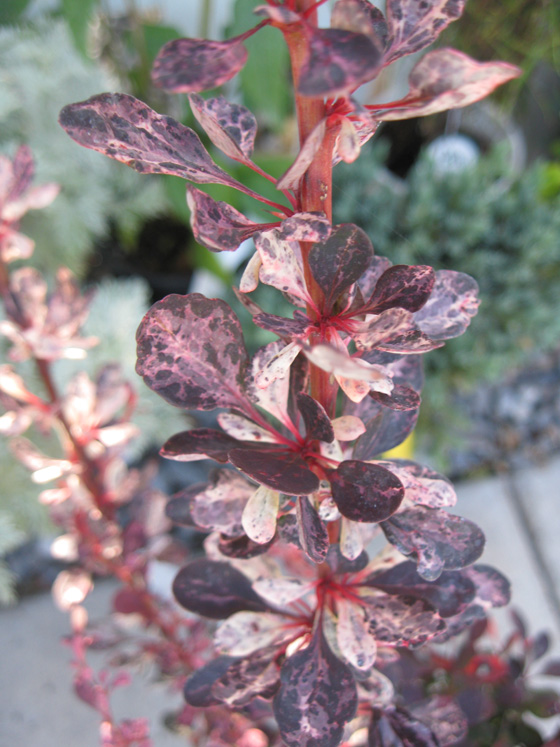| PSC 2620: Woody Trees and Shrub | Course Home | Week 3 |
Berberis thunbergii var. atropurpurea - Japanese Red Barberry
Plant Viewer
 |
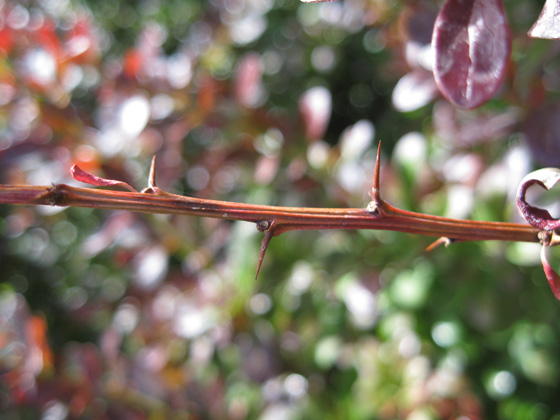 |
| The Barberry leaf is ovate, about 1 inch long, and they form alternately on the stem. | The Barberry has 1/2 inch long thorns. |
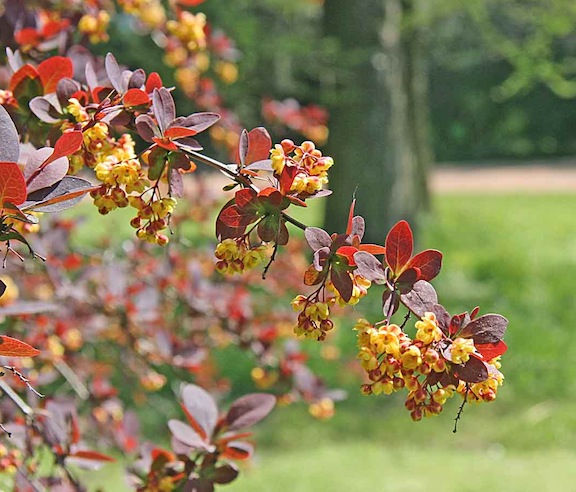 |
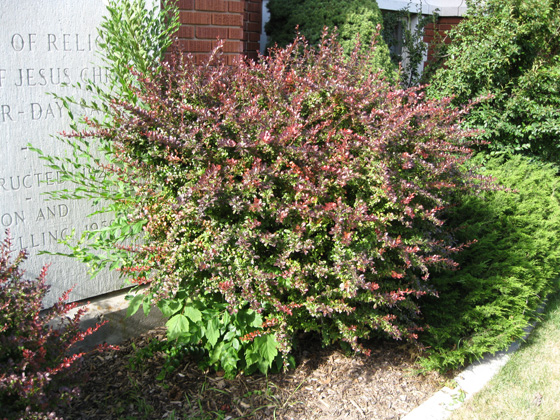 |
| Yellow flowers appear in spring and hang beneath the leaves. | B. thunbergii var. atropurpurea has a naturally rounded form that can be easily pruned to remove any inconsistency in the shape. |
Plant Description
Berberis thunbergii var. atropurpurea is one of the most widely used landscape plants today and is valued for its rich red foliage, good form and hardiness. It has a dense form with a fairly rounded natural habit, though new growth often rises rather gangly above the plant. While the regular species can grow to be a medium-sized shrub (up to 6 feet high), the majority of commercially-available cultivars are under 3 feet high at maturity.
The leaves are ovate in shape, 1 inch long, and arranged alternately on the stem. The growth is a rich red color that slowly matures to a dark green. The coloring creates a deep red effect, with dark green under-tones visible on closer inspection. Fall color is typically a mixture of orange and red and quite showy.
Tough, sharp 1/2 inch thorns form at the nodes along the stem. Thorns on older stems can be especially vicious. Light yellow flowers, 1/4 inch wide, form beneath the leaves in the early spring. They are not considered to be of much ornamental value. Oblong red fruit appears in fall and can persist through the winter, but many of the popular cultivars produce little fruit.
It is highly tolerant of most climate conditions. Though it prefers full sun, I have seen plenty thriving in nearly full shade. Once established, B. thunbergii will thrive in the heat and tolerate dry conditions for days on end. It does require good drainage, as it will not tolerate consistently wet or moist soil. It may sucker or seed itself to colonize an area, though this is not as much of a problem in Utah as elsewhere in the nation.
Landscape Use
Its hardy nature makes it a great selection for spots with poor soil such as parking lots or building foundations. It is an excellent security plant to use under windows or other security-sensitive areas in the landscape.
Points of interest
The fruit is attractive to wildlife. Other species of Berberis are cultivated for their edible berries, though the
Notable Cultivars
Concorde Very dark wine-colored leaves which are slightly rounder than the regular species. Grows slowly to only 18 to 24 inches high and wide.
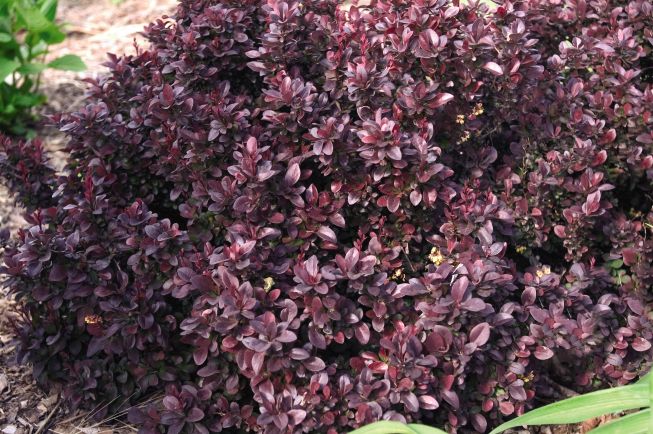
Crimson Pygmy: A good, compact and tightly branched variety, growing to 2-3 feet tall. The leaf shape and color is nearly identical to the regular species.

Helmond Pillar An upright form with good dark purple foliage. 4-5 feet tall and 2 feet wide.
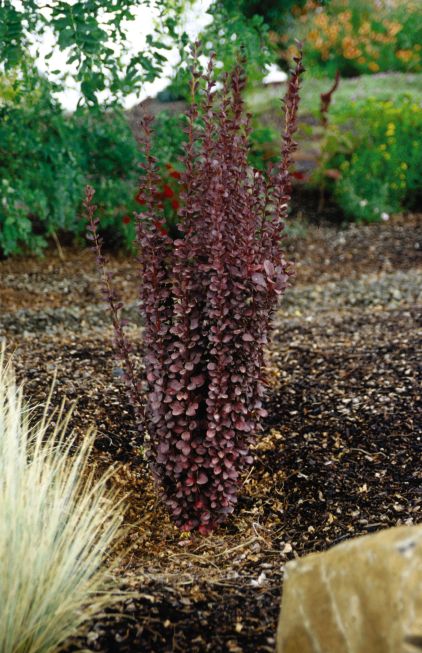
Kobold A dwarf (2 feet tall and wide) green-leaved dwarf cultivar noted for its excellent natural round shape.

Rosey Glow New growth appears a mottled pink and red on this red-leafed cultivar.
